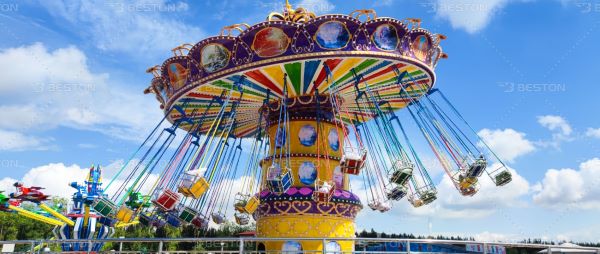Large-scale amusement equipment relies on highly integrated operating systems to ensure smooth function, guest safety, and performance reliability. These systems blend advanced control logic, mechanical drive units, and real-time monitoring to support high-capacity operations.
This article outlines the key components and operational mechanisms behind modern thrill rides, emphasizing the role of automation, motion control, and diagnostics in daily amusement ride functions.
Central Control: The Role of PLCs
At the heart of most large rides is a programmable logic controller (PLC). This industrial-grade computer system governs the ride’s logic—initiating sequences, monitoring inputs, and triggering safety responses. The PLC is programmed with precise timing and motion logic, allowing operators to manage ride cycles with accuracy.
Using a Human-Machine Interface (HMI), operators can start, pause, or shut down the ride and monitor all systems in real time. The interface displays ride speed, pressure, temperature, and fault codes, ensuring constant operator awareness.
Integrated Safety Systems
A multi-layered safety structure supports each ride. Sensors embedded throughout the structure—such as limit switches, pressure sensors, and proximity detectors—feed data to the PLC. If anomalies occur, such as open restraints or abnormal motion, the system halts automatically.
Emergency brakes, redundant limiters, and battery backups ensure that power failures or system faults won’t lead to unsafe ride conditions. This redundancy is essential for equipment handling vertical or swinging motions, where gravitational force increases risk.
For example, the swing fairground ride utilizes a motion envelope system that calculates real-time angular speed and passenger weight distribution. If limits are exceeded, the control system initiates gradual deceleration and alerts the operator.
Motion Control and Drive Systems
Motion systems vary based on ride type but generally include variable frequency drives (VFDs), servo motors, and hydraulic or pneumatic actuators. These devices control speed, torque, and directional shifts with precision.
For high-speed equipment, VFDs are crucial. They regulate acceleration and deceleration curves to protect mechanical parts and enhance passenger comfort. Hydraulic systems are typically used for rides that require strong lifting power or sudden directional shifts.
System synchronization is critical. A swing ride or rotating arm must have each moving part precisely timed, or imbalances can cause dangerous instability.
Real-Time Monitoring and Diagnostics
Modern systems use communication protocols like CANbus or Modbus to link components. This network constantly updates the central controller with real-time data on vibration, temperature, motor load, and more.
Any deviation triggers alerts or automatic shutdowns. Maintenance staff can review logs to identify wear trends or early-stage faults. This predictive maintenance approach reduces downtime and extends service life.
Between operations, diagnostics automatically scan the system to ensure everything is within standard parameters. These systems also support remote troubleshooting from the manufacturer or technical team.
Environmental Adaptability
Weather conditions play a major role in ride operation. Environmental sensors track wind, rain, and temperature. If wind exceeds safe limits, for instance, the system may reduce ride height or cancel a cycle entirely.
Such features are particularly critical when selecting swing tower rides for sale, where elevation and rotation increase exposure to crosswinds. Manufacturers often integrate adaptive control software that modifies ride behavior dynamically based on environmental input.
Conclusion
Operating systems in large amusement equipment are complex, precise, and built for safety-first performance. Through the integration of automation, fail-safes, and diagnostics, they enable smooth, thrilling, and secure ride experiences.
For operators, understanding these systems is essential—not only for compliance and maintenance but also to make informed decisions when upgrading or investing in new ride technology.

